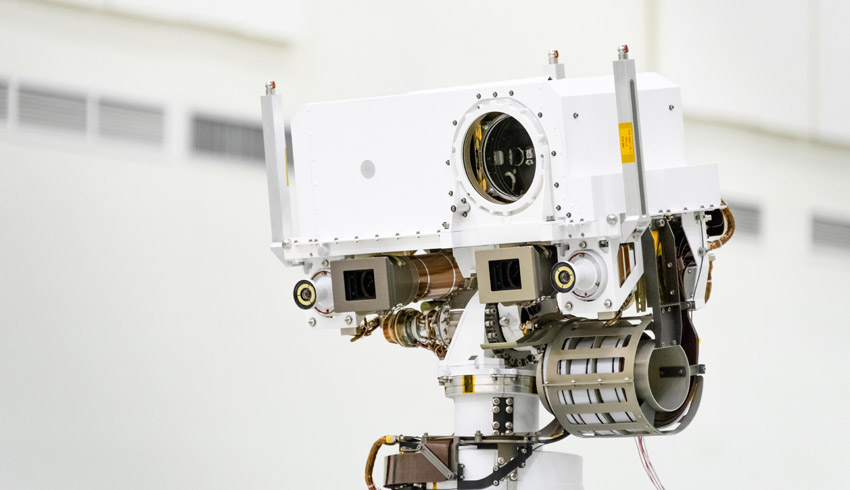Rover operators, who carefully plan out each driving route and each movement of a rover's robotic arm, view these stereo images through 3D goggles to see the contours of the landscape.
Located on Perseverance's 'head', Mastcam-Z (the Z stands for "zoom") is a more advanced version of Mastcam, which NASA's Curiosity Mars rover has relied on to produce gorgeous panoramas of the Martian landscape.
However, it does more than that, and so will Mastcam-Z. Along with producing images that enable the public to follow the rover's daily discoveries, the cameras provide key data to help engineers navigate and scientists choose interesting rocks to study.
The difference is that Curiosity's Mastcam can't zoom.
Curiosity's Mastcam was initially designed to be zoomable, but that proved difficult to achieve at the time in such a small instrument (Curiosity was launched in 2011).
Jim Bell of Arizona State University, Mastcam-Z's principal investigator and Mastcam's deputy principal investigator said, “The original plan was for Curiosity to have a zoom camera that could go out to an extreme wide angle like a spaghetti western view.”
Instead, Curiosity's Mastcam has one telephoto lens and one wide-angle lens. Images are taken through each and can be combined to produce stereo views.
But the wide-angle lens takes in far more of the landscape in a single shot than the telescopic one; it requires up to nine telescopic images to match.
“It would have been an amazing panoramic perspective but proved really hard to build at the time,” Bell added.
Perseverance's Mastcam-Z simplifies matters, zooming both lenses until they match and can be used to make a single 3D image. This is both easier and requires sending fewer images – and less data – to Earth.
Besides providing a stereo view to help drivers choose the safest path, Mastcam-Z will help geologists choose scientific targets and better understand the landscape that rock samples are found in: Did they fall from a neighbouring cliffside? Are they from an ancient stream?
Mastcam-Z will provide "superhuman vision", viewing the landscape in a variety of colours (wavelengths of light), including some that can't be detected by the human eye. Scanning the terrain in the ultraviolet or infrared, for example, could reveal metal meteorites dotting the surface or color variations indicating compositions that warrant more detailed analysis by other instruments.
Mastcam-Z isn't a spectrometer, which is to say, an instrument that uses light to do detailed scientific analysis. "But it can provide mineral clues that other instruments will follow up on," Bell said.
The camera system can also observe the sun and sky, watching for transits of Mars' moons across the sun and measuring how dust storms and cloud formations change over the seasons.
The Mars 2020 Perseverance rover mission is part of a larger program that includes missions to the moon as a way to prepare for human exploration of the Red Planet. Charged with returning astronauts to the moon by 2024, NASA will establish a sustained human presence on and around the moon by 2028 through NASA's Artemis lunar exploration plans.

